Assisted living facilities care for our aging and/or handicapped loved ones and face unique challenges in providing for their safety and security. From medical needs to location awareness and access control, residents of assisted living facilities face a wide variety of obstacles and require near-constant monitoring. As some of the most vulnerable members of society, it is incumbent upon owners, supervisors, and managers of ALFs to ensure those residents are safe in their new homes.
Access Control
Access control systems are vital to the safety of ALF residents and are highly adaptable based on the nature of the residents of the assisted living facility. One aspect of access control is its ability to control who enters the facility and at which point of entry. Access may be controlled by a variety of methods, including security officers, card readers, biometric readers, keypads, and retinal readers. Visitors and vendors may utilize one entry access point that is managed by a security officer, while other points of entry may utilize keypads, cards, or some sort of physical reader that allows employees to access areas of the facility not open to everyone. This is a key aspect for facilities that need to limit access to pharmaceuticals to only certain employees. Access control systems are adaptable not only to a location but also to a user. Housekeeping may not require access to the same areas and equipment as a registered nurse or doctor, especially where the control of pharmaceutical access is concerned. Access control is crucial to managing dangerous or emergency situations. Should an accident occur and emergency services are required, the access control system will lock down the area of the incident and inhibit access until authorities secure the area. The system may also place the entire premises on lockdown in the event a resident is missing until the resident is located and safely returned to their safe zone.
These are networkable, allowing them to react to triggered alarms by sending messages via email and/or text to specific employees. These messages provide detailed information such as the location of the triggered alarm and the date and time. These networkable systems are fully encrypted, ensuring only the proper individuals are able to access the information.
Video Surveillance Services
Video surveillance is a significant piece of assisted living facilities’ security solutions. Video cameras in high-traffic and high-priority areas provide a visual record of the movements and activities of everyone in the facility. Intelligent video surveillance systems do more than supply a video feed. These high-tech systems may be programmed to alert managers or emergency services in the event of an incident. Should someone access an unauthorized or restricted area, notifications are sent to ensure faster response times. This option is critical in monitoring residents while providing them the freedom to move around from one area to another. Surveillance allows monitors to see what is happening in all areas of the facility and take necessary responsive actions. Video feeds not only monitor residents, visitors and vendors, but also allow management to ensure employees are acting professionally at all times. The video cameras may be accessed off-site by managers and supervisors through the use of an app on a computer or cell phone. Intelligent video surveillance uses secure IP addresses that allow recordings to be stored anywhere. Using video surveillance systems by assisted living facilities provides a safer environment for its residents and protection for the facility itself as visual evidence of any incidents or emergencies that may occur.
Panic Buttons
Panic buttons are important to residents of assisted living facilities. Many residents face mental and physical challenges that cause them to be unable to provide self-care. As residents’ needs vary from person to person, residents require access to nursing staff for assistance when they need it. Panic buttons are a great solution. These buttons vary from being strategically placed near the bed and/or in the bathroom for easy access by the resident of the room, to a mobile panic button that is worn by the resident and travels with that person everywhere they go. The former is a simpler, more inexpensive solution, while the latter provides the flexibility to call for help from anywhere in the facility if a resident becomes immobilized or finds themselves in a dangerous situation.
Emergency Text Notifications
It is impossible for nurses to be everywhere at once, and call buttons may not be heard if the nurse is in another room with a resident. This can be a dangerous situation when the call button is being pushed for an emergency. One viable option to ensure emergency situations may be prioritized by nursing staff is to equip staff with cell phones that will send text messages alerting staff members that a panic button has been triggered and a resident requires assistance immediately. Not only is this a critical way for nurses to ensure residents receive the proper care they need, but it also protects the facility from any liability issues they may face in the case of an incident with a resident where care was not provided in a rapid fashion.
Advanced Technology Offerings
A Total Solution has been providing advanced security options to assisted living facilities in the Tampa Bay area for decades. From intelligent video surveillance services with cloud-based software to high-tech access control with direct links to emergency services, A Total Solution is the solution to all of your facilities’ security needs. Our job doesn’t stop with installation. We also service and maintain the systems ensuring all parts are working optimally at all times. A failure of any portion of a security system may be the difference between life and death for a resident of an assisted living facility. Protecting vulnerable loved ones is our priority and providing state-of-the-art equipment to meet those needs is our specialty.
Contact ATS today to discuss security options for your assisted living facility.
